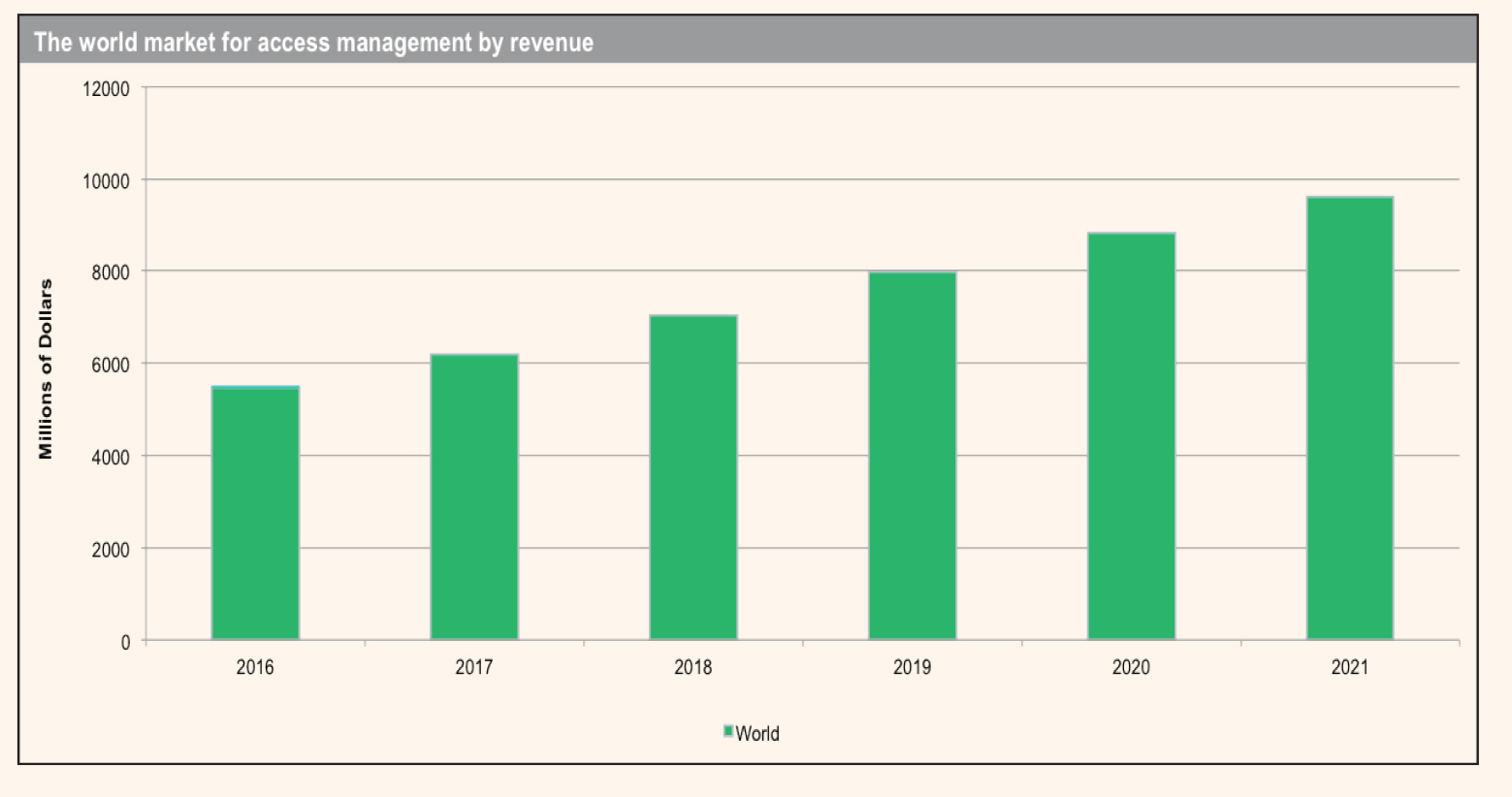Access management can be defined as the process of granting authorized users the rights to use a service, while preventing access to non-authorized users. Following are the key access management growth factors over the next five years.
GDPR deadline fast approaching
Traditionally, finance, banking, insurance, government, utilities and other heavily regulated end-user sectors have focused on identity- and accessmanagement solutions. However, over the past year there has been growth in non-traditional markets. Not only have the manufacturing and retail sectors become more security conscious, but the increase in the number of data breaches and the looming legislation around General Data Protection Regulation (GDPR) in May 2018 has also piqued renewed interest in security and identity and access management (IAM) solutions.
● Highlight
● The global access management market is projected to increase from $5.4 billion in 2016 to $9.6 billion in 2021.
● Companies with 5,000 or more employees are projected to contribute the largest revenue growth to the access management market over the next five years.
● Over the past year, there has been growth in non-traditional market sectors such as manufacturing and retail.
Smaller organizations using access management solutions
Access management solutions have traditionally been deployed by larger organizations. In fact, companies with 5,000 or more employees are projected to contribute the largest revenue growth over the next five years, increasing from $4.38 billion in 2016 to $5.4 billion in 2021. The proportional importance of this segment is forecast to decline from 80 percent of total access management revenue in 2016 to around 56 percent in 2021.
Small and medium-sized enterprises (SMEs) will steadily increase the amount of access management solutions they deploy. For example, revenue from companies with between 1 and 499 employees is projected to increase from $109.6 million in 2016 to $705 million in 2021. This segment managed to grow from 2 percent of total revenue in 2016 to 7.3 percent in 2021. The introduction of more cloud solutions within the access management market is likely to help SMEs, in particular, because cloudbased access management solutions can be more cost effective and scalable for small and medium enterprises.
On-premises hybrid and cloud solutions
As there are still a lot of applications running on premises at companies, a significant portion of larger organizations still want some on-premises solutions. Larger organizations are more likely to move to a hybrid model, with some applications running in the cloud as a stepping stone toward full adoption of cloud solutions. Hybrid solutions are projected to increase from $1.1 billion in 2016 to $1.7 billion in 2021. In contrast, smaller organizations are more likely to deploy software-as-a-service (SaaS) solutions, which for them can be more cost effective than on-premises solutions.
Technological developments and the battle with hackers
There is a continuous battle being waged as hackers increasingly try to gain control of the networks they want to compromise. It is important for organizations to take into account people’s locations, to help detect fraudulent activity and ensure the right people have the right access, at the right time and at the correct location. Technologies like machine learning (ML) and artificial intelligence (AI) are also important weapons in this battle.
Leveraging emerging technologies, such as behavioral biometrics, will help to reduce the burden on end-users and increase the validity of identity proofing. Organizations can learn a lot about how people interact with their networks, to give a full picture of how things are evolving, but these technology developments are a bit of a cat-and-mouse game.

Blockchain makes security cheaper and more accessible
Many organizations have isolated and centralized identity management systems, but the current landscape demands federation and single sign-on (SSO). These systems make identity management, protection and verification very cumbersome, costly and risky for industry enterprises and government agencies. Blockchain has the potential to introduce improvements that can make security more accessible and budget friendly.
With smart contract capabilities, there can even be a secondary market where users benefit from sharing resources back to the network. Smart contracts automatically execute pieces of code carrying valuable data or performing other condition-based executions.
A permissioned blockchain technology provides core capabilities that enable a trusted digital identity network to build and operate the following:
- A shared, append-only ledger, with one version of the facts shared across all permissioned network participants in real time.
- Smart contracts that ensure verifiable and signed business logic is executed in each transaction.
- Trust between known participants, to verify transactions and ensure records are valid.
- Privacy and security measures that grant access only to permissioned parties.
Cybersecurity – Access Management Report 2018
This two-volume report provides coverage in several key areas of the identity and access management market, including access management and identity governance and administration. It provides detailed analysis of individual vertical markets from market-specific operating models to key trends and development opportunities.